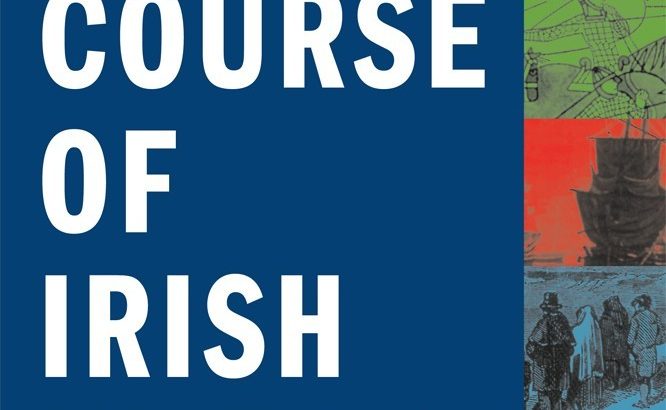The Course of Irish History
Edited by T.W. Moody and F.X. Martin (Mercier Press, €20.00/£16.00)
Felix M. Larkin
This book, now re-issued in a fifth edition, has been one of the most widely read of our history books. Indeed, it can be said to be itself a part of our history.
First published in 1966, it arose out of an innovative television series broadcast by the fledgling Telefís Éireann. In its original 21 chapters, corresponding to the individual television programmes, the then foremost scholars in Irish history outlined that history from earliest times to 1966. Each chapter and its antecedent programme were the work of a different scholar, an acknowledged expert in the particular period under consideration. The programmes brought the fruits of decades of historical research in the universities to a very wide audience, and the companion book preserved this work for future generations.
Both the programmes and the book played an important part in shifting popular understanding of our history out of the realm of myth and patriotic oversimplification, thus fostering a more mature sense of pride in our past.
How do the original chapters read today, over 45 years after they were written? They have not been revised or updated, and the editor of the latest edition seems to make a virtue of the fact that ”nothing was done to disturb the original contributors’ pristine prose”.
They are — all 21 original chapters — beautifully written, and they remain useful introductory essays for a general reader. Their treatment of each phase of our history is balanced and has largely stood the test of time.
For more specialist readers, however, some aspects of the original chapters do require updating. An example is the Land Wars of 1879-83 and 1886-90. Portrayed in this volume in the traditional way as the inevitable consequence of a rapacious land system, subsequent accounts (taking a cue from work such as James Donnelly’s magisterial The Land and People of Nineteenth-Century Cork, published in 1975) tend to see the Land Wars more as a ”revolution of rising expectations” resulting from the determination of tenant farmers to preserve their recent material gains in a period of temporary agricultural crisis.
With each new edition of this work, the original chapters have been supplemented by additional ones extending the timeframe of the book up to a current date.
There are now four such chapters, covering the years 1966-82, 1982-94, 1994-2001, and 2002-11 respectively. They are much too long, and represent a wholly disproportionate part of the present edition.
The last new chapter is actually more than twice the length of any of the original chapters. Moreover, they suffer badly from having been written too close to the events they describe, for as the late Prof. Patrick Lynch warned at the start of his essay — the most contemporary of the original chapters, dealing with the period 1921-66 — ”the more recent the event, the more difficult it is to grasp its full historical significance and implications”.
It is noted in the final chapter of this edition apropos of clerical child-abuse scandals in Ireland that Vatican diplomacy is often characterised as ”thinking in centuries”. Historians likewise should ”think in centuries”.
The original contributors to The Course of Irish History did just that, and their work endures; the later additions, on the other hand, are so lacking in perspective that they detract from the achievement of the original contributors.



